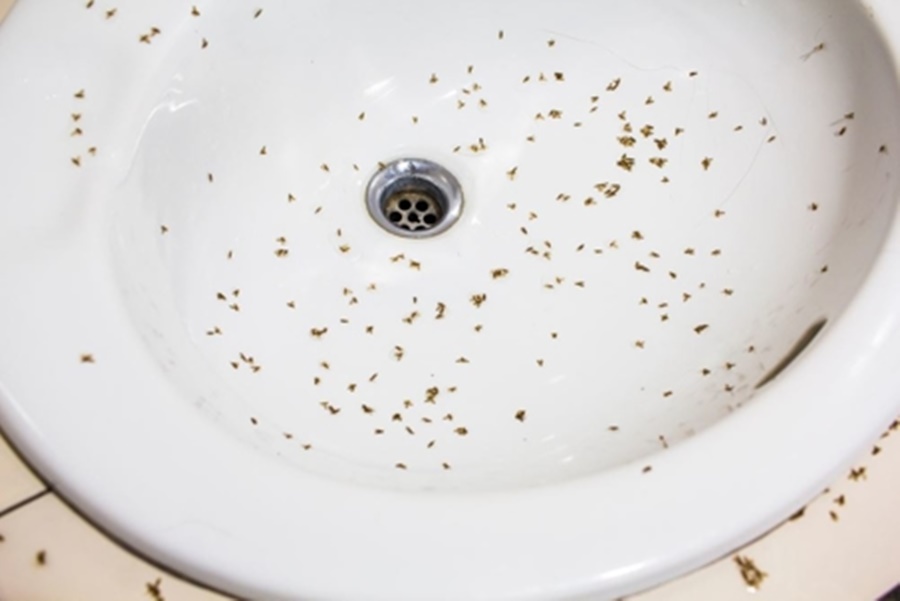Finding gnats in your bathroom sink can be both frustrating and confusing. These tiny pests often seem to appear out of nowhere, but their presence is a clear indicator of a deeper issue that needs immediate attention. In this comprehensive guide, we’ll explore why gnats are attracted to your bathroom sink, how to eliminate them effectively, and how to prevent them from coming back permanently.
What Are Gnats and Why Do They Invade Bathroom Sinks?
Gnats are small flying insects, commonly mistaken for fruit flies or drain flies. The term "gnats" generally refers to several types of tiny flies, including fungus gnats, drain flies, fruit flies, and even some species of midges.
In bathrooms, the most common offenders are drain flies (also known as moth flies) and fungus gnats. These insects are attracted to the moisture, organic matter, and standing water that your bathroom environment often provides especially in and around sinks, drains, and shower areas.
Top Reasons Why Gnats Are in Your Bathroom Sink
1. Organic Debris Buildup in Drain Pipes
Gnats are highly attracted to the decaying organic matter that builds up in the P-trap and drain pipes. This includes hair, soap scum, toothpaste residue, and skin flakes that accumulate over time. These serve as both food and breeding grounds for the pests.
2. Leaky or Slow-Draining Pipes
A slow or clogged drain that holds standing water creates an ideal environment for gnats. The constant moisture and stagnation are perfect for gnat larvae to thrive and hatch.
3. High Humidity Levels
Bathrooms naturally have higher humidity levels due to steam from showers and baths. Gnats, especially fungus gnats, are drawn to humid, moist environments where they can lay eggs in damp organic material.
4. Houseplants in the Bathroom
If you keep indoor plants in your bathroom, they could be the source of your gnat infestation. Overwatered soil is a common breeding ground for fungus gnats.
How to Identify the Type of Gnat in Your Sink
Drain Flies
Small, moth-like appearance with fuzzy wings
Usually found near sinks, tubs, or showers
Active mostly at night
Lay eggs in the organic slime inside drains
Fungus Gnats
Tiny, mosquito-like with long legs
Often hover around damp soil or overwatered plants
Attracted to mold and fungi
Fruit Flies
Rounder body, reddish eyes
Usually found near fruit, garbage, or sugary liquids
Occasionally appear in bathrooms due to spilled toiletries
How to Get Rid of Gnats in the Bathroom Sink
1. Deep Clean the Sink Drain
Step-by-step guide:
Boiling Water Flush: Pour boiling water down the drain to loosen slime and kill larvae.
Baking Soda and Vinegar Solution: Mix 1/2 cup baking soda with 1/2 cup vinegar, pour it into the drain, and let it sit for 1 hour. Rinse with hot water.
Drain Brush or Snake: Scrub the inside of the drain pipe to remove biofilm and organic buildup.
Enzyme Cleaner: Use a bio-enzymatic drain cleaner to break down organic waste safely and prevent regrowth.
2. Use DIY Gnat Traps
Apple Cider Vinegar Trap: Mix vinegar, a drop of dish soap, and sugar in a cup. Cover with plastic wrap and poke holes. Gnats are attracted and drown.
Red Wine Trap: Similar method using red wine to lure gnats.
Sticky Traps: Yellow sticky traps can be placed near plants or sinks to catch flying adults.
3. Eliminate Standing Water and Moisture
Fix leaky faucets and slow drains
Use a dehumidifier or improve bathroom ventilation
Wipe down sinks and counters regularly
Clean toothbrush holders and soap dishes
4. Treat Indoor Plants (If Applicable)
Dry out the topsoil between watering
Use hydrogen peroxide solution (1:4 with water) to kill larvae
Replace old soil with fresh, sterile potting mix
Add a layer of sand on top of the soil to deter egg-laying
Preventative Measures to Keep Gnats Away for Good
1. Maintain a Regular Drain Cleaning Schedule
Clean your bathroom sink drain weekly using natural cleaners or enzymatic solutions to prevent organic buildup.
2. Improve Bathroom Ventilation
Install or use exhaust fans to reduce humidity. Leave doors or windows open after showers to air out the space.
3. Avoid Overwatering Plants
Water indoor plants only when the topsoil feels dry. Use pots with proper drainage to prevent moisture buildup.
4. Store Toiletries Properly
Keep all personal hygiene products sealed and avoid leaving sugary or scented items exposed, as these can attract fruit flies and gnats.
5. Check for Plumbing Issues
Inspect under-sink plumbing for leaks, loose fittings, or signs of mold, which can harbor pests. Seal any cracks or gaps that may allow entry.
When to Call a Pest Control Professional
If your efforts to eliminate gnats don’t succeed within a week or two, it’s time to contact a licensed pest control expert. Persistent infestations may indicate a more serious underlying issue, such as mold growth, a broken drain pipe, or a hidden nest in the wall.
Conclusion
Gnats in your bathroom sink are more than a nuisance they're a sign that your home may have drainage or hygiene issues that need attention. By identifying the root cause, cleaning thoroughly, and adopting a regular maintenance routine, you can eliminate these pests and prevent them from returning.

